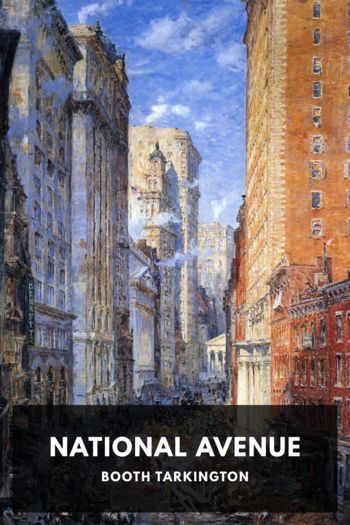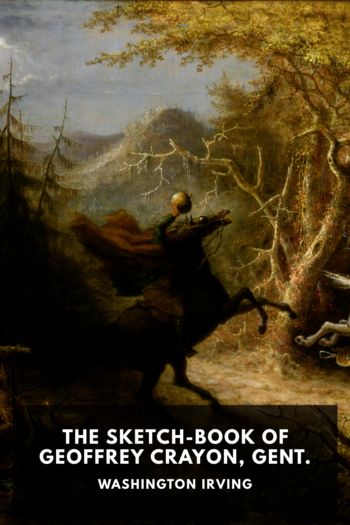Enchanted Evenings:The Broadway Musical from 'Show Boat' to Sondheim and Lloyd Webber by Block, Geoffrey (good story books to read .TXT) 📕

Read free book «Enchanted Evenings:The Broadway Musical from 'Show Boat' to Sondheim and Lloyd Webber by Block, Geoffrey (good story books to read .TXT) 📕» - read online or download for free at americanlibrarybooks.com
Read book online «Enchanted Evenings:The Broadway Musical from 'Show Boat' to Sondheim and Lloyd Webber by Block, Geoffrey (good story books to read .TXT) 📕». Author - Block, Geoffrey
By 1927, the early masters of the American Broadway musical, Herbert, Cohan, Romberg, and Rudolf Friml, either had completed or were nearing the end of their numerous, lucrative, and—for their era—long-lived Broadway runs. Joining Kern, a new generation of Broadway composers and lyricists—Irving Berlin, Cole Porter, Oscar Hammerstein, George and Ira Gershwin, Richard Rodgers, Lorenz Hart, and, in Germany, Kurt Weill—all but Hammerstein and Weill are featured in Al Hirschfeld’s drawing “American Popular Song: Great American Songwriters”—had already launched their Broadway careers by 1927.6
But despite their auspicious opening salvos, the greatest triumphs for this illustrious list, with the exception of Kern’s, would arrive after Show Boat in the 1930s and 1940s.
“American Popular Song: Great American Songwriters” (clockwise from left): Richard Rodgers, Lorenz Hart, Cole Porter, Harold Arlen, Dorothy Fields, Jerome Kern, Johnny Mercer, Ira Gershwin, Irving Berlin, Hoagy Carmichael, George Gershwin, and Duke Ellington. 1983. © AL HIRSCHFELD. Reproduced by arrangement with Hirschfeld’s exclusive representative, the MARGO FEIDEN GALLERIES LTD., NEW YORK. WWW.ALHIRSCHFELD.COM
Critical Issues
Although the present survey will offer biographical profiles of the composers, lyricists, librettists, and other key players in order to place their careers in the context of a particular musical, critical and analytical concerns will receive primary attention. In fact, each of the fourteen musicals explored in the main body of the text and the Stephen Sondheim and Andrew Lloyd Webber musicals in chapters 15 and 16 demonstrate critical issues of enduring interest. Two issues in particular emerge as central themes and will occur repeatedly throughout this survey: the tension between two ideological approaches—song and dance versus integrated—to the Broadway musical, and the alleged conflict between temporal popularity and lasting value and the selling out, again alleged, not of tickets but of artistic integrity.
Acute manifestations of the latter conflict have been attributed to the careers of Gershwin, Rodgers, Weill, Frank Loesser, Leonard Bernstein, and Sondheim. The former issue is embodied in (but by no means confined to) the differences between the Rodgers and Hart and the Rodgers and Hammerstein shows; the career of Porter, who, after a string of hits (and then some flops) in musicals modeled after Anything Goes, responded in Kiss Me, Kate to the “anxiety of influence” generated by Rodgers and Hammerstein; and the controversial but frequently alleged schism between the European and the American musicals of Weill.7 At the risk of giving away the plot, the view espoused here is that the song and dance musical comedies that prevailed in the 1920s and ’30s and the integrated musicals that became more influential in the 1940s and ’50s both allow a meaningful dramatic relationship between songs and their shows. A subtext of the ensuing discussion is that selling tickets does not necessarily mean selling out artistic integrity.
In each chapter readers will hear again from opening-night theater (and occasionally music) critics. These critics were usually the first to offer prophetic pontifications for Broadway audiences eager to discover whether or not they should feel smug or inadequate in their appreciation or rejection of a show. The critics (again, mostly theater critics) can be reviled but they cannot be ignored, especially since, despite their lack of specialized musical training, they have consistently demonstrated remarkable precognition (or inspired self-fulfilling prophecies) regarding the critical as well as the popular fate of Broadway shows. Although they must produce their work under enormous pressure and seemingly against all odds, receiving little sympathy in the process, opening-night critics frequently call attention to issues that will reappear to haunt a show. Such early perceived problems and issues as Show Boat’s second act or the jarring stylistic heterogeneity of Porgy and Bess or The Most Happy Fella do not go away but remain to be reassessed and reinterpreted by future generations.
The degree to which the stage works we love should be performed in authentic versions—to the often questionable extent this is possible—has been a source of debate in America for more than two centuries. Writing about nineteenth-century American approaches to European opera, Richard Crawford defines accessibility as “the tailoring of the music to suit particular audiences and circumstances” and authenticity “as an ideal countering the marketplace’s devotion to accessibility.”8 According to Crawford, accessibility “privileges occasions over works” and “invests ultimate authority in the present-day audiences.” “Authenticity privileges works over occasions” and “invests ultimate authority in works and the traditions within which they are composed.” The desirability of—or resistance to—establishing an authentic musical and literary text for a show and the struggle between authenticity and accessibility will loom as a major issue in several chapters of this survey, in particular those on Show Boat, Anything Goes, On Your Toes, Porgy and Bess, and the James Goldman-Stephen Sondheim-Hal Prince-Michael Bennett Follies.9 Kern and Hammerstein, the principal creators of Show Boat, themselves produced a second “authentic” version that would be more “accessible” to audiences desiring the newer Rodgers and Hammerstein model. Anything Goes revivals in 1962 and 1987 would be equipped with a new book and many songs interpolated from other Porter shows. The 1983 On Your Toes would match a new book with the original score (albeit somewhat rearranged).
The original “operatic” sung form (emphasizing authenticity) of Porgy and Bess has clearly prevailed in recent years over its “Broadway” form with spoken dialogue (emphasizing accessibility). Nevertheless, considerable debate continues to rage over what constitutes an authentic text for this work. Charles Hamm has argued that the cuts made by the creators in its original Theatre Guild production are justifiable for artistic as well as for commercial reasons and that the current urge to restore these cuts creates a historically and aesthetically untenable reconstruction.10 With the purpose of shedding some light on this heated subject, the chapter on Porgy and Bess will treat at length the historical background and aesthetic problems posed by one such cut, the “Buzzard Song.”
The starting point for contemplating the “text” of a musical is almost invariably a vocal score rather than a full orchestral score, and later—after the release of Oklahoma! in 1943—the cast recording in various states of





Comments (0)